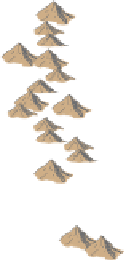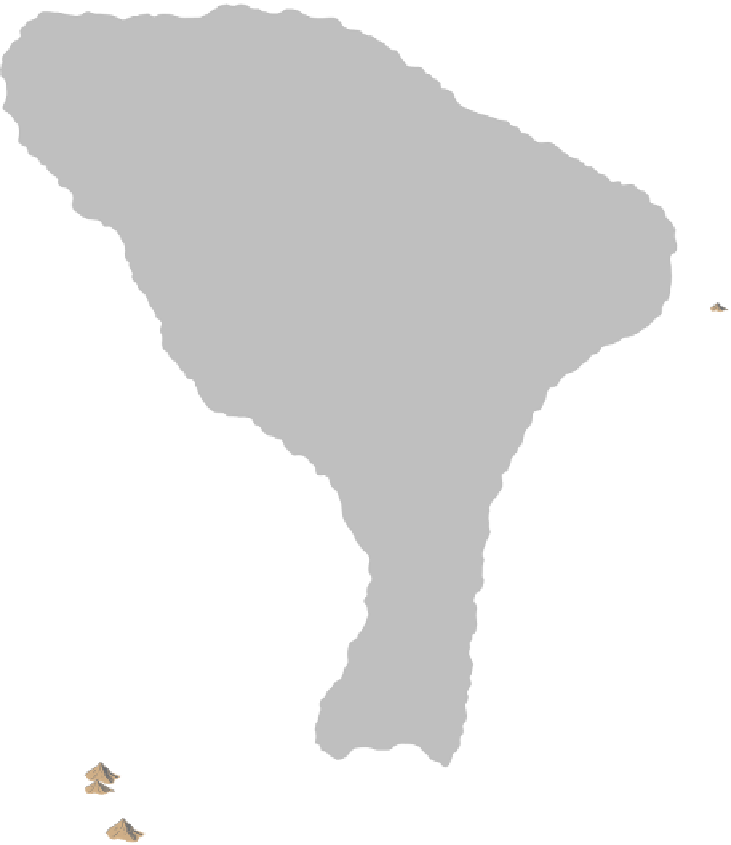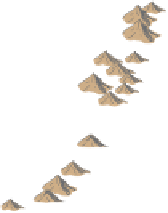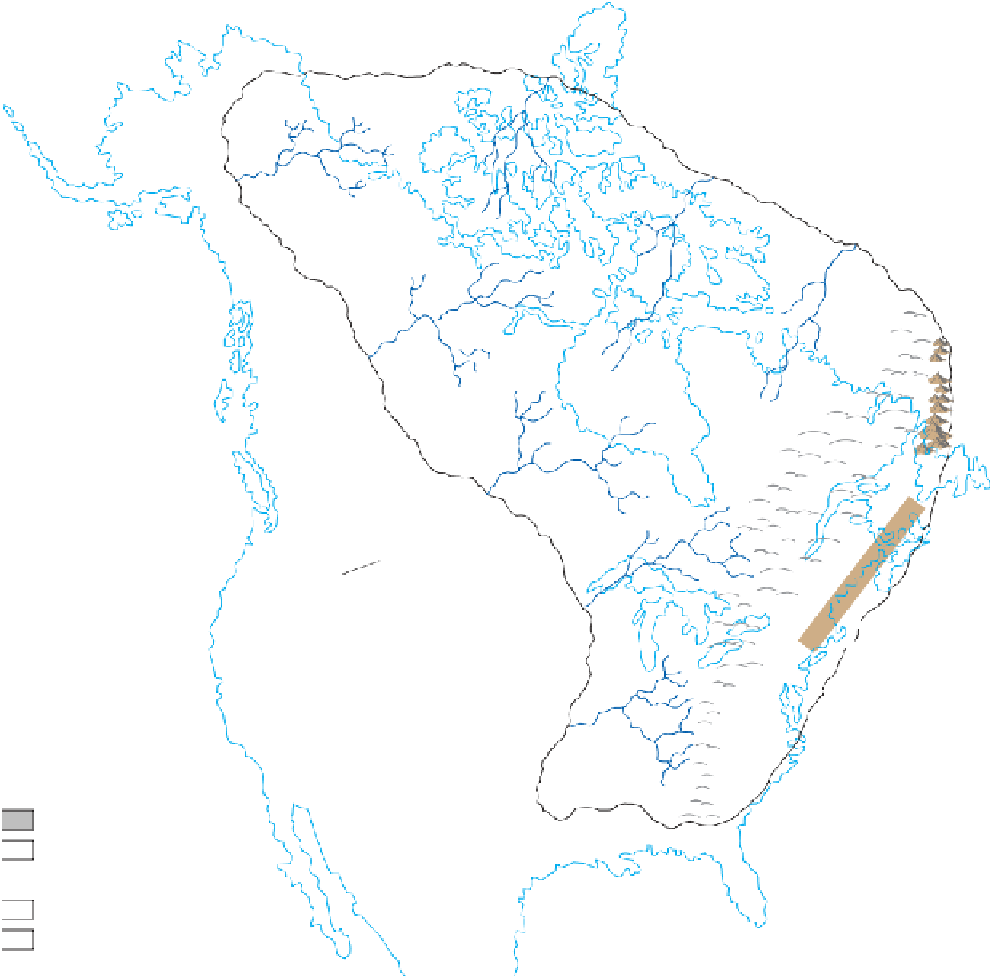Geology Reference
In-Depth Information
Lowlands
Uplands
Nevadan
mountain
building
a
Land
Mountains
Volcanoes
Epeiric sea
Deep ocean
Newly forming
Gulf of Mexico
◗
Figure 22.5
Jurassic Paleogeography of North America
against the craton margin (
Figure 22.8). This event, known
as the
Sonoma orogeny,
occurred at or near the Permian-
Triassic boundary and resulted in the suturing of island-arc
terranes along the western edge of North America.
Following the Late Paleozoic-Early Mesozoic destruction
of the volcanic island arc during the Sonoma orogeny, the
western margin of North America became an
oceanic-continental convergent plate boundary. During the
Late Triassic, a steeply dipping subduction zone developed
along the western margin of North America in response to
the westward movement of North America over the Farallon
plate. This newly created oceanic-continental plate boundary
controlled Cordilleran tectonics for the rest of the Mesozoic
and for most of the Cenozoic Era; this subduction zone
◗
marks the beginning of the modern circum-Pacifi c orogenic
system (see Chapter 23).
Two subduction zones dipping in opposite directions
from each other formed off the west coast of North America
during the Middle and early Late Jurassic (
Figure 22.9).
The more westerly subduction zone was eliminated by the
westward-moving North American plate, which overrode the
oceanic Farallon plate.
The
Franciscan Complex,
which is up to 7000 m thick, is
an unusual rock unit consisting of a chaotic mixture of rocks
that accumulated during the Late Jurassic and Cretaceous.
The various rock types—graywacke, volcanic breccia, silt-
stone, black shale, chert, pillow basalt, and blueshist meta-
morphic rocks—suggest that rocks of the continental shelf,
◗
























Search WWH ::

Custom Search